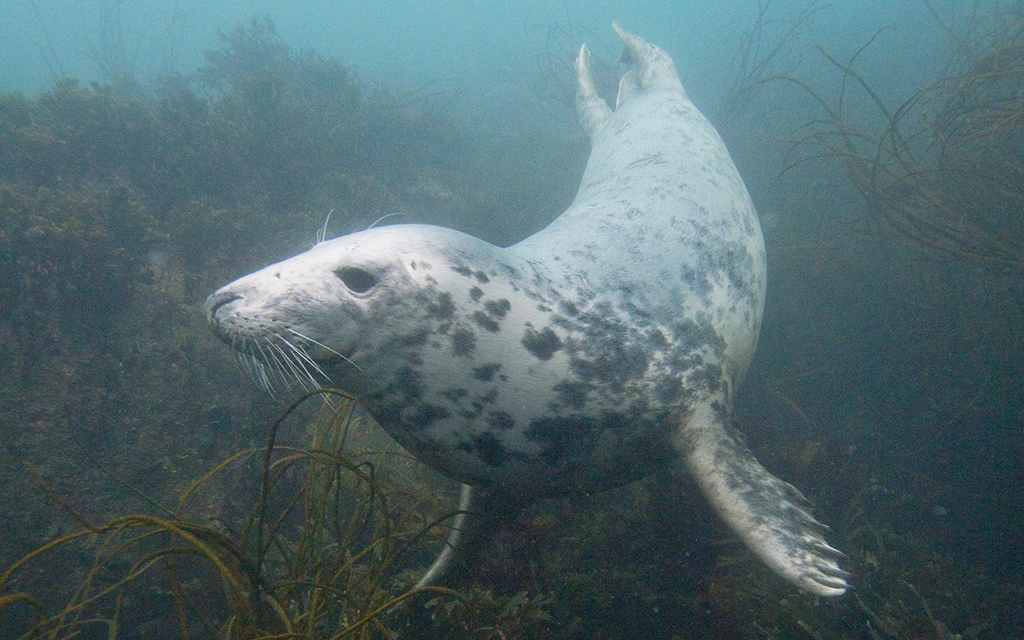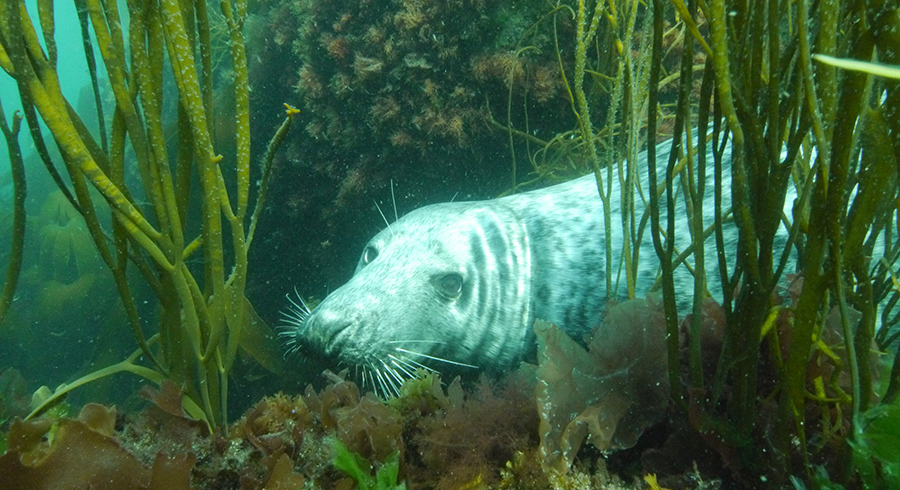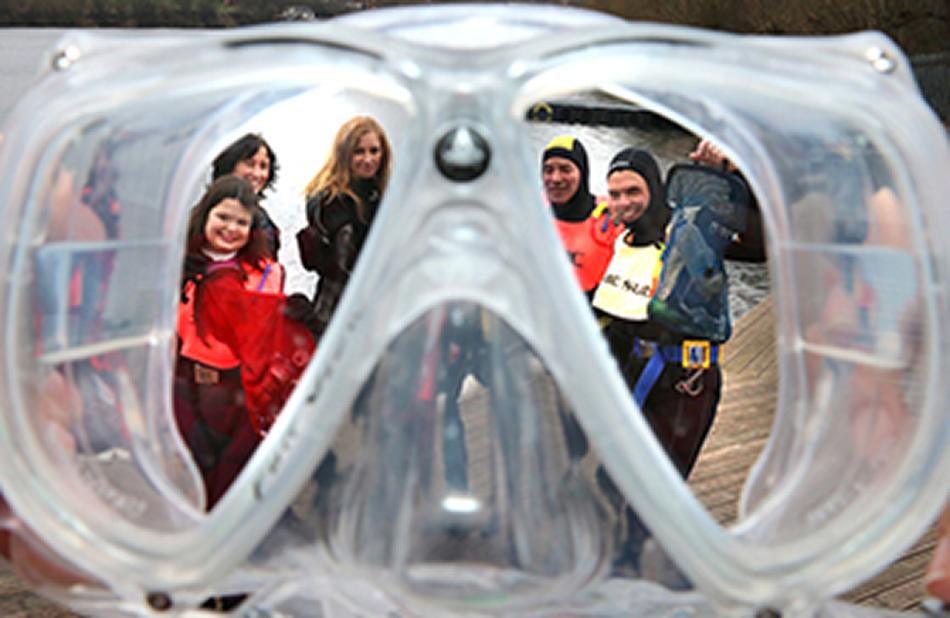
Andy Torbet visits a seal sanctuary in Cornwall after being invested with a lofty title courtesy of the SeaLife Trust.
I’ve been fortunate enough to snorkel with various large mammals around the coast of the UK. Whales, dolphins and seals are relatively prolific around the British Isles, with regular appearances from some of the largest, including the humpback, sperm, minke and orca. When it comes to dolphins, the bottlenose pod of the Moray Firth are the most northerly of their species in the world. But the most common sight to us divers, snorkellers and shore explorers, are seals.
Apart from the odd freak visitation of a sea lion or outboard chewing walrus, the UK’s resident pinnipeds fall into two species – common or harbour seals and grey seals. The former, inappropriately named, is much rarer; the only time I’ve witnessed them in significant numbers was while sea kayaking near the Falls of Lora near Oban. So that’s in a sea loch. Not a harbour.
The grey seal is much more common, and thus the one we’re most likely to see basking on rocks or inspecting us underwater. I have been lucky enough to film with grey seals on six separate occasions, in Cornwall, around Lundy, off the Monach Isles, along the Dornach Firth (although this time above the water) and twice at the Farne Islands. And this does not include the countless interactions with them, mostly in Devon and Cornwall, on my ‘days off’. The encounters have always been friendly and inspiring. So, I was very pleased to become an Ambassador of the SeaLife Trust, and visit their Seal Sanctuary in Gweek.
The sanctuary was founded in 1958, so it’s five years younger than BSAC, but a venerable institution nevertheless. My visit took place in June, so I missed the busy seal pup rescue season. This runs from August to September, while their eventual rehabilitation and release hopefully takes place around March.
I did, however, get to meet some of the permanent residents, those seals with problems so severe that they would never survive without the support of their human handlers. Their conditions range from brain injuries to blindness. This non-profit sanctuary is open to the public and the fees generated help keep the doors open, the rescue and rehabilitation programme working and the resident patients healthy. Not all the problems are man-made; seals seem to suffer from many of the same birth defects, diseases and problems that we humans have in our own population.
Although I wasn’t allowed to snorkel with any of the residents, it was fascinating to interact with these large mammals close-up and out of the water, a scenario that wouldn’t be possible in the wild

Encountering a seal underwater is a gift. You are very much in their element, so advice such as “don’t chase after them” isn’t strictly speaking necessary, as they will outpace any diver, any time. On land, however, they are more vulnerable and wary. If you see a young pup still with its white, furry coat it may look abandoned but the mothers, who leave often for hours at a time to feed, will return.
If you remain close by, your presence may actually scare the mother off, sometimes permanently. However, if a seal, of any age, looks in real, obvious difficulty there are a number of ways in which you can help. In Cornwall, telephone the Seal Sanctuary direct (01326 221361) or the Cornish Wildlife Trust Hotline (0345 201 26 26) if you see a distressed seal while diving. Across the rest of the UK, and in Cornwall, the best numbers for advice and assistance are British Divers Marine Life Rescue (01825 765546 – 24 hours) or the RSPCA (0300 1234 999 – also 24 hours but only covering England and Wales).
Article ‘Get your Gweek on, Mr Ambassador’ by Andy Torbet, first published in SCUBA magazine, Issue 141 December 2023.

 Author: Andy Torbet | Posted 20 Dec 2023
Author: Andy Torbet | Posted 20 Dec 2023



